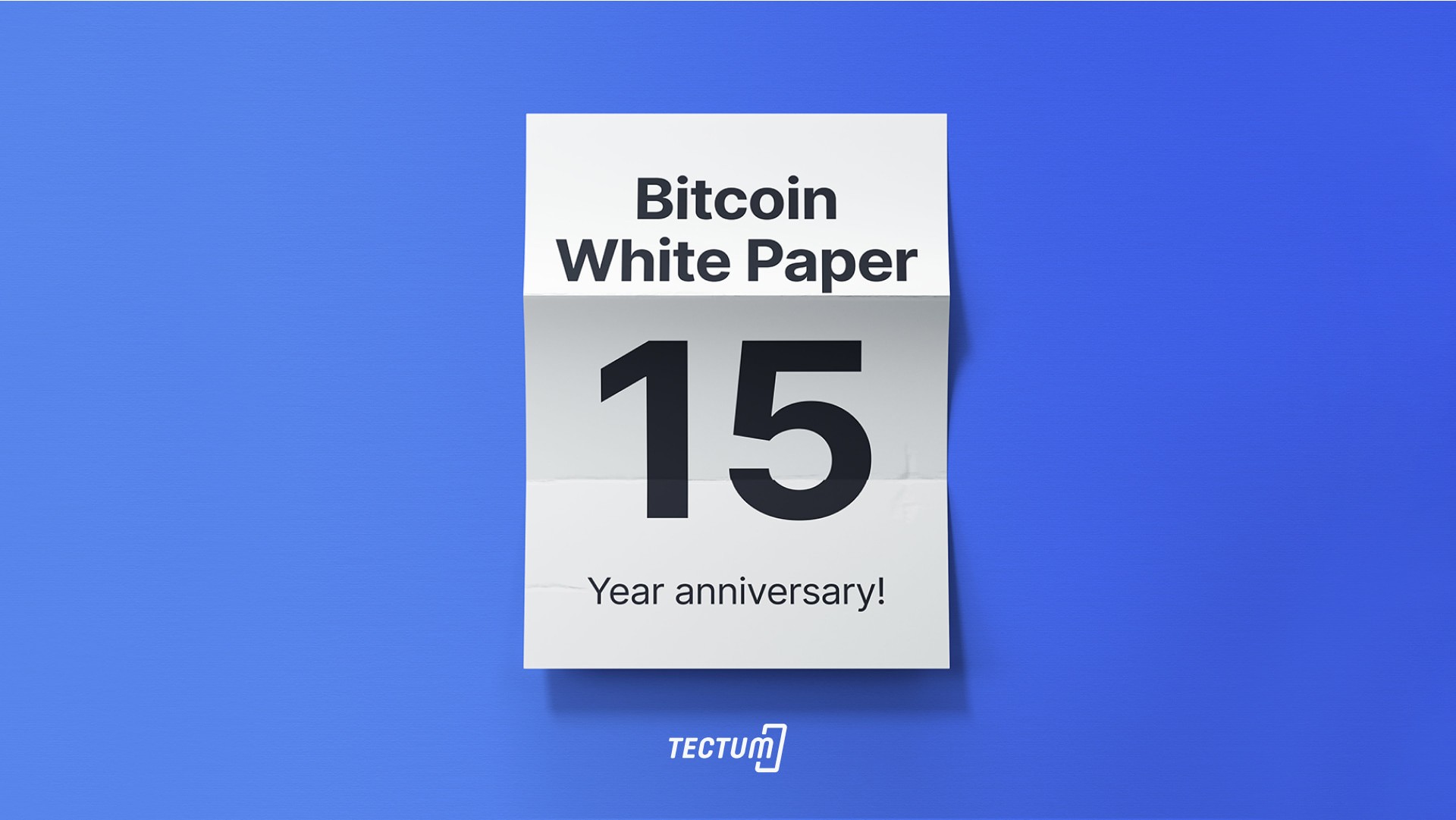15 years ago, an anonymous individual with the pseudonym – Satoshi Nakamoto released the Bitcoin Whitepaper. This document contains the intricate working details of the world’s first cryptocurrency. To mark the anniversary, this article examines the major attributes of the innovation. This will enable everyone to understand why this tectonic shift was necessary.

In addition, we will also point out how Tectum continues to uphold the legacy of the pioneer of the decentralized network. Continuing from where Satoshi Nakamoto left off, our blockchain has made significant advances while maintaining the basic tenets.
The Bitcoin Whitepaper – Foundational Principles and Major Propositions
Before the Bitcoin Whitepaper, the world transacted very differently. Everyone was connected to a central server and had to rely on one or more intermediaries to send or receive data. Anyone who gains access to the main storage will have access to every piece of information. In addition, there was zero transparency in the information system, and users had zero control.
To solve these, Satoshi Nakamoto came up with a system that was built on the following principles:
- Peer-to-Peer Data Transfer: Data is stored on blocks that are spread out in a chain/net-like network. Hence, the name – blockchain. Instead of communicating via a central server, individuals can send and receive information directly. Even if a hacker breaks into the system via a block, that cybercriminal can only access details stored in that block and not the entire chain.
- Transparent Data Architecture: Every single data can be traced to the point of origin. Each transaction has a timestamp showing the time of transfer and period of approval. Anyone can verify the details on a block explorer by using the wallet address.
- Private and Secure Transactions: This is where Satoshi Nakamoto showed his ability to strike a balance in the Bitcoin Whitepaper. Although the network is transparent and transactions can be traced, third parties will only be able to see the wallet address. They cannot ascertain the name and other private information of wallet holders by simply looking at the wallet address.
- User-Controlled Network: Bitcoin utilizes a proof-of-work consensus that allows everyone to participate in network maintenance and earn rewards. Anyone who has the required technology can become a miner and approve transactions. As part of the user-centered nature of the BTC network, users are always in charge of their data and digital assets.
Tectum SoftNote bills – Picking up From Where Satoshi Nakamoto Left off
Having studied the Bitcoin Whitepaper, Tectum founders decided to improve on what is obtainable on the first decentralized network. Interested individuals can read the Tectum Whitepaper to learn more.
Here is a summary of how the T12 protocol improves the current offerings of the BTC network while maintaining the basic principles:
- Zero-Knowledge Proofs for Total Privacy: To further improve security on the T12 protocol, Tectum uses zero-knowledge proof. This allows wallets to get approvals from nodes without needing to share information. Instead, the receiver solves a complex computational equation to prove that they are the rightful recipient of the data.
- Speedy Transactions to Avoid Network Congestion: Tectum is the fastest blockchain in the world, with a speed of 1.3 million transactions per second. This is a significant improvement on Bitcoin’s 7 transactions per second.
- Zero Gas Fees and Commissions to Incentivize Users: To continue with the user-centered network, Tectum enables people to send Bitcoin and other cryptocurrencies for free on the T12 protocol. In addition to zero gas fees, anyone who mints or fills a SoftNote Bill with liquidity will receive a commission for every time someone uses it.
- All Technology and No Middleman: Tectum follows the tents of the Bitcoin whitepaper by upgrading the peer-to-peer network. Transactions are powered by artificial intelligence, blockchain technology, and smart contracts. Individuals on the network do not need a DAO to approve their transfers or utilize their funds.
- Multichain Capabilities to Increase Scalability: Finally, the T12 protocol can bridge with almost every major blockchain to enable a smooth transaction. Bitcoin, Ethereum, Litecoin, Tether, etc. In addition, companies operating on centralized systems can also incorporate our network into their architecture.
Do you want to integrate SoftNote and enjoy the benefits of the fastest blockchain in the world? The API documentation is available for everyone who wants to build or migrate to the T12 protocol.
